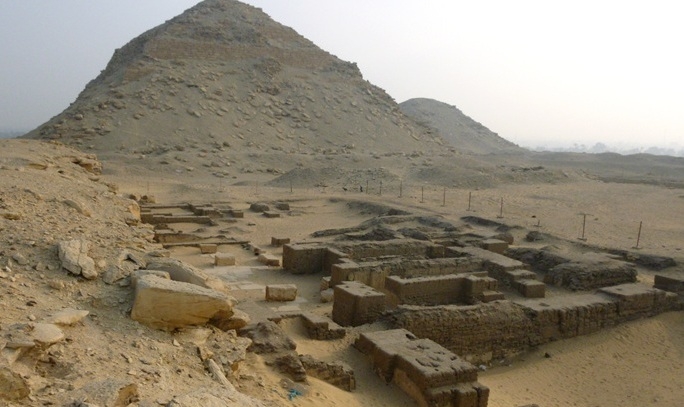Pyramid of Neferefre Egypt | A Forgotten Royal Wonder
When we think of Egypt’s pyramids, most minds go straight to the Giza Plateau—the towering marvels of Cheops, Chephren, and Mycerinus. But tucked away in the sands of Abusir lies a lesser-known royal structure shrouded in mystery and intrigue: the Pyramid of Neferefre. While not as grand as its Giza counterparts, this unfinished pyramid holds vital clues about the short reign of a pharaoh and the evolution of pyramid building in ancient Egypt. If you're a traveler fascinated by hidden gems and off-the-beaten-path adventures, the Pyramid of Neferefre Egypt offers a unique window into history few ever see.
Who Was Neferefre?
Neferefre, also known as Raneferef, was a relatively obscure pharaoh of Egypt's 5th Dynasty, ruling around 2460 BCE. His reign was tragically short, likely only lasting a few years. Yet despite this brevity, he left behind an ambitious legacy in the form of a pyramid that was never completed. His pyramid complex is located in the Abusir necropolis, between Saqqara and Giza—an area reserved for royalty during the 5th Dynasty.
The Pyramid That Wasn’t Meant to Be
Originally planned as a full pyramid, the Pyramid of Neferefre never reached completion due to the king’s untimely death. As a result, the structure was hastily turned into a mastaba—a flat-roofed rectangular tomb more common in earlier Egyptian periods. Only the lower part of the pyramid’s core was completed, which gives the site an unusual, squat appearance unlike any other pyramid in Egypt.
But what it lacks in height, it more than makes up for in archaeological richness. The pyramid site offers insights into Egypt’s 5th Dynasty religious practices, art, and funerary traditions.
Uncovering the Secrets: Excavations and Finds
For decades, the Pyramid of Neferefre Egypt was overlooked by archaeologists, overshadowed by its more iconic neighbors. However, Czech archaeologists, led by Miroslav Verner, have spent years excavating the area since the late 20th century. Their work has brought to light a treasure trove of discoveries, including:
-
Royal statues made from red quartzite, depicting Neferefre in ritual poses.
-
Papyri fragments, which provide invaluable information about daily life, administration, and religious customs during the 5th Dynasty.
-
Funerary temple remains, including inscriptions and carved reliefs showing priests and offering rituals.
These finds give us a richer understanding of a time when Egypt was transitioning into new religious ideologies, particularly the rise of solar worship linked to the sun god Ra.
The Cult of the Sun: Ra’s Rising Influence
Neferefre’s pyramid complex was closely associated with solar worship, a hallmark of the 5th Dynasty. Like many of his contemporaries, Neferefre dedicated his mortuary temple to the sun god Ra, which is evident from the temple's orientation and inscriptions.
Interestingly, the unfinished nature of the site provides rare evidence of how such structures were built in phases—and how they could be quickly adapted when circumstances changed. His temple complex was called "Divine are the Places of Neferefre", even though it was never finished, reflecting the religious and royal importance still attributed to him.
Why Visit the Pyramid of Neferefre?
Most tourists flock to the Giza Pyramids, but those seeking a more intimate and serene experience should explore Abusir. Visiting the Pyramid of Neferefre offers:
-
Peaceful exploration without the crowds.
-
A deeper understanding of Egypt’s less-documented dynasties.
-
A chance to witness the evolution of pyramid architecture from grandeur to practicality.
The site also forms part of the larger Abusir necropolis, which includes other pyramids like those of Sahure and Neferirkare, making it a worthwhile full-day exploration for history buffs.
Tips for Tourists
-
How to Get There: Abusir is located about 15–20 minutes southwest of Cairo. While it’s not on every tour itinerary, you can easily arrange a private guided trip.
-
Best Time to Visit: The cooler months (October to April) offer the most comfortable experience.
-
What to Bring: Comfortable walking shoes, water, a hat, and a camera—you’ll want to capture every ancient stone and distant desert horizon.
Did You Know?
-
The unfinished pyramid is made of local limestone and contains some of the oldest known wooden coffins ever discovered in Egypt.
-
Despite being relatively unknown, Neferefre’s statues are considered masterpieces of royal portraiture.
The Pyramid’s Legacy
The Pyramid of Neferefre Egypt may not dazzle with grandeur, but its significance in Egyptology is immense. It stands as a testament to a king's brief yet impactful reign and offers rare insight into a turbulent era of ancient Egyptian history. From unfinished stones to delicate papyri, this pyramid whispers secrets that the winds of time have almost forgotten.
Whether you're a first-time visitor to Egypt or a returning explorer, don't miss the chance to walk through one of its most enigmatic and underappreciated ancient sites. Step off the tourist track, and discover the Pyramid of Neferefre—where history lives in silence and stone.
Explore more hidden treasures of Egypt with Flying Carpet Tours, where every site tells a new story waiting to be discovered.

